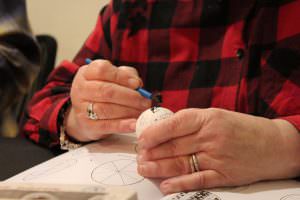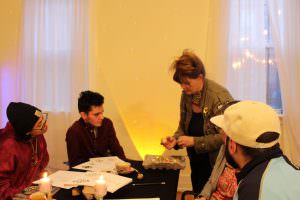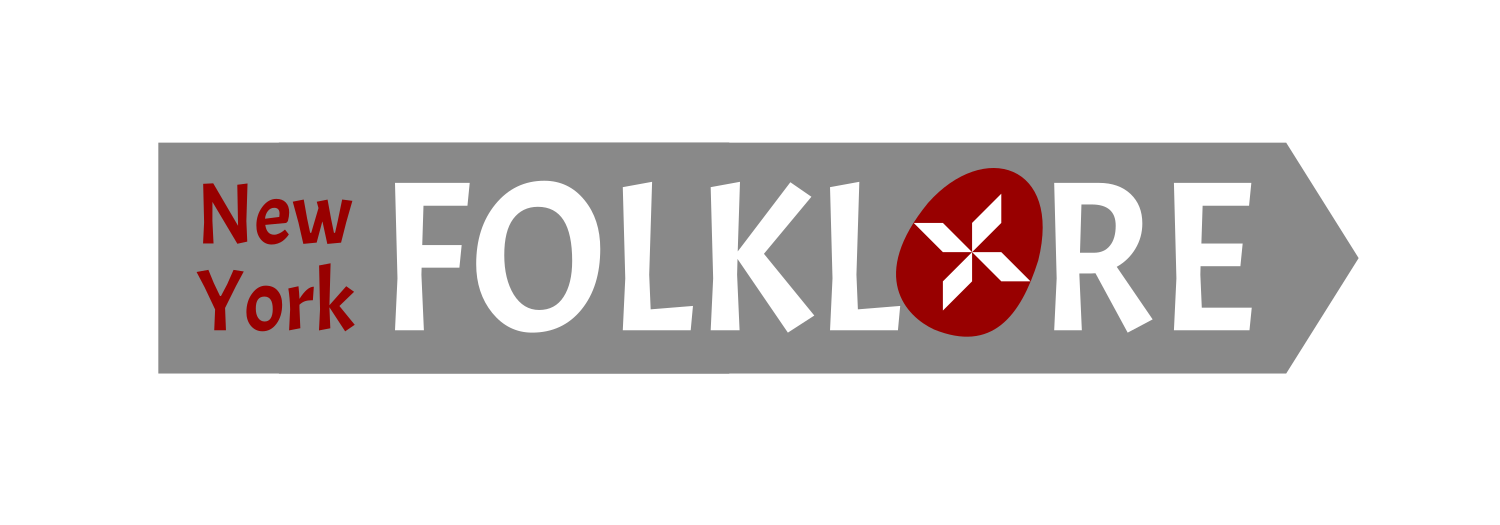New York’s Capital Region is home to a large community of Ukrainian people. Many are the children of immigrants who came during the late 19th and early 20th centuries. These communities grew in towns like Watervliet, Cohoes, Troy, and others across the state.
This is where the story of Sarah Bachinger begins. Growing up between Cohoes and Herkimer, she learned the traditional arts of the Ukrainian Lemko (an ethnic group of Ukrainians who lived in western Ukraine/Eastern Poland).
“ We would visit her [grandmother] for two or three weeks in the summer, during vacation and almost every summer while she was still alive and she would teach me the Ukrainian cross stitch with all the traditional patterns… I learned that from her and the Pysanky making as well.”
The traditional knowledge and project idea have long been part of Bachinger consciousness. When Russia invaded Ukraine, the idea was given life in the form of the Pysanky for Peace Project.
According to the Pysanky for Peace website:
We aim to create and collect 100,000 pysanky for the purpose of raising funds to help the ongoing humanitarian efforts in Ukraine, and to bring awareness and share this important cultural tradition of the Ukrainian People. We are currently working to gather partners who would be interested in donating goods and to exhibit the work of contributing pysanky artists/writers and eventually, we would like to see pysanky from this project delivered to the people of Ukraine after peace finds its way back to our homeland.

A workshop attendee traces beeswax on an egg.
As part of the project Sarah has begun hosting Pysanky workshops in the Capital Region. Most recently at Refuge Event Space in Troy, NY.
The workshop begins with a short mediation by Refuge proprietor, Tara, followed by an introduction by Sarah, to the Psyanky for Peace Project, and a short folk tale.
“Hutsuls, which are an ethnic group from the Carpathians believe that pysanky making is important because there is a monster that is chained to the mountains, who keeps track of how many pysanky are made each year and if not enough pysanky are made than his chains loosens and evil is able to take over, but if enough pysanka are made then those chains tighten and peace remains on earth.”
The story is followed by an explanation of how Pysanky are made, usually around the Easter season. Small pieces of beeswax are melted into a tool called kistka, which are used to trace designs on an egg. After the design is complete the eggs are dipped in dye, more beeswax is applied, and the egg is dipped again in a different color. Once this is complete the wax is melted off to reveal a multicolored design.

Sarah demonstrates to attendees.
The workshop is attended by a mix of people; some are of Ukrainian descent and are familiar with Pysanky making, others are attending in solidarity with their neighbors and friends. The conversation varies but often turns to the experience of growing up Ukrainian in the Capital Region. Topics like; parish preferences, where to get pysanky supplies, and did you know so and so?” are discussed over the Ukrainian music playing in the room, interrupted occasionally with a triumphant “Look!” and presentation of an egg or a question about the process for Sarah.
The project will have their first exhibit opening in April at the Wenham Museum in Wenham, MA.
You can find more information about the Pysanky for Peace Project at https://pysankyforpeace.com/
To learn more about aid efforts for Ukraine in the Capital Region you visit the 518 Ukrainians Facebook Group.
